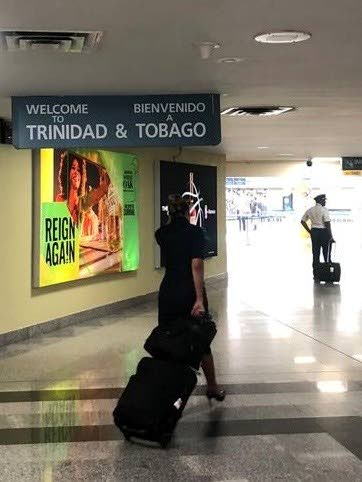Scooting on a plane

Stacey Samuel-O'Brien
My mobility scooter gives me much appreciated independence, and it’s the only walking aid I use when I leave my home. So as soon as I found out that I could, I started travelling with it.
Before Soca Scooter (my first), I used the wheelchair service in airports. I’d select “Wheelchair Required” when buying the ticket and, after check-in, a wheelchair attendant would whisk me off to my gate and walk away.
That’s the process, whether there were five minutes or five hours left before boarding. I’m physically unable to use a wheelchair on my own, so I’d just have to sit and wait wherever I was left.
You can imagine then, how eager I was to travel with my scooter when I discovered I would have a more independent and comfortable trip.
Naturally I was nervous the first time, but it turned out to be quite simple. After the ticket purchase, I spoke with a “Special Services” agent to let them know that I’d be travelling with a scooter and gave them the scooter specs. Then at the airport, I was in control of my movements and on my own every step of the way, from check-in to boarding, just like a non-disabled passenger, but using Special Services lanes where available.
The only difference was that since I could not go through the electronic scanner at security, Soca Scooter and I were patted down.
At the gate, I requested a gate tag (identifier) for the scooter and an aisle chair. An aisle chair is a narrow wheelchair used on board to carry disabled passengers directly to/from their seats, when requested. I was called first to board and I “drove” right up to the plane door, then transferred to the aisle chair and left the scooter for ramp personnel to place in the hold. When I arrived at my destination, I was the last to deplane, but they brought the scooter back to the plane door and I was off!
That is the process, with only slight variations among different airlines and airports…easy as pie!
Theoretically.
In practice, my experiences have not always been that straightforward. I’ve had to wait on a plane for two hours after landing, before the one vehicle with a lift could take me off the aircraft, because the airport didn’t have jetways. Another time, I returned to Atlanta only to be told that my scooter was in Ohio because the ramp agents had loaded it onto another plane. The airline loaned me a wheelchair (that I could not use) to go home, and delivered my scooter hours later. That was an extremely long night.
So the first time I travelled home with it, I didn’t know what to expect, but I knew that I could handle any situation. I’m happy to say, though, that I had excellent service that exceeded my expectations! Each step of the way was smooth and seamless, and I was assisted by very pleasant attendants. One of my joys of coming home is simply hearing our accent and “Trini speak,” so I smiled inwardly when the two attendants arrived to strap me into the aisle chair to deplane, because their Trini colloquial expressions were music to my ears.
They did not bring my scooter to the plane door; in Piarco they take it directly to baggage claim. Instead, I was greeted by a wheelchair attendant, who wheeled me through immigration, duty-free, baggage claim and customs.
In immigration, there’s a special services counter, and all disabled passengers go through the red line in customs, so I quickly moved through these steps. Between that, I collected and transferred to my scooter at baggage claim. I was actually still escorted all the way outside to ensure that I made it out of the airport safely.
In my opinion, it’s a smooth and well-considered process that truly caters to the disabled person’s needs and experience.
Admittedly, the first time it annoyed me a little that I was not able to use the scooter in the airport. In duty-free, the attendant left me outside and went in search of what I wanted, so I couldn’t be indecisive or choosy.
These days, though, I know the process, so I plan ahead and just relax. In fact, when I was home in May, the attendant and I were having such a good conversation that we’d exited the building before I realised that I was still sitting in the wheelchair. Luckily, we had no problems going back through Customs to retrieve my scooter from baggage claim. Everyone had a good laugh that evening.
I can’t overemphasise the value of independence for a disabled person and I’m pleased that the airline services at home have evolved to cater to the needs and comforts of disabled travellers.
Multiple sclerosis (MS) is a debilitating autoimmune disease that affects the central nervous system.
In MS, the body’s white blood cells attack the protective covering of nerve fibres. When nerve fibres become exposed, electrical messages between different parts of the body and the brain are no longer transmitted effectively. MS can lead to sensory, cognitive, digestive and muscular issues.
It is a degenerative disease for which there is no cure.

Comments
"Scooting on a plane"